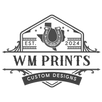3D printing, also known as additive manufacturing, has revolutionized the way we approach design, prototyping, and production. Since its inception, this technology has seen tremendous growth and innovation. In this post, we will explore some of the key milestones and innovations in the history of 3D printing.
The Beginnings
The concept of 3D printing dates back to the early 1980s. In 1981, Hideo Kodama of Nagoya Municipal Industrial Research Institute filed a patent for a rapid prototyping system that involved photopolymers. Although this patent was not granted, it laid the groundwork for future innovations in the field.
The Birth of Stereolithography
One of the most significant milestones in 3D printing was the development of Stereolithography (SLA) by Charles Hull in 1984. Hull invented a method for creating 3D objects using digital data and patented the process. He went on to co-found 3D Systems in 1986, which became one of the leading companies in 3D printing.
The Advent of Fused Deposition Modeling
The late 1980s saw further advancements with Scott Crump inventing Fused Deposition Modeling (FDM). This technique involves the extrusion of melted thermoplastic filament to create three-dimensional objects layer by layer. FDM remains one of the most popular and widely used 3D printing methods today.
Open Source Movement
The early 2000s brought a significant shift in the 3D printing industry with the open-source movement. Projects like RepRap initiated the democratization of 3D printing technology, making it accessible to hobbyists and professionals alike. This movement played a crucial role in advancing the capabilities and affordability of 3D printers.
Innovations in Material Science
As 3D printing technology evolved, so did the materials used. Initially limited to plastics, advancements in material science have enabled the use of metals, ceramics, and even biological materials. This expansion has opened up new possibilities in industries such as aerospace, healthcare, and construction.
Present Day and Future Prospects
Today, 3D printing is at the forefront of innovation, enabling the creation of complex structures and customized products. With continued research and development, the future holds even more potential for this transformative technology.
At WM Prints, we embrace the power of 3D printing to provide innovative and practical solutions, like the Lyman Type Prep Tools Holder, a perfect example of how 3D printing can enhance daily tasks and efficiency.
In conclusion, the history of 3D printing is a testament to the ingenuity and creativity of the human spirit. As we look ahead, the boundaries of what is possible will only continue to expand, reshaping industries and inspiring new ways of thinking.
Visit WM Prints to discover more about our diverse range of products designed to make life easier and more creative.





